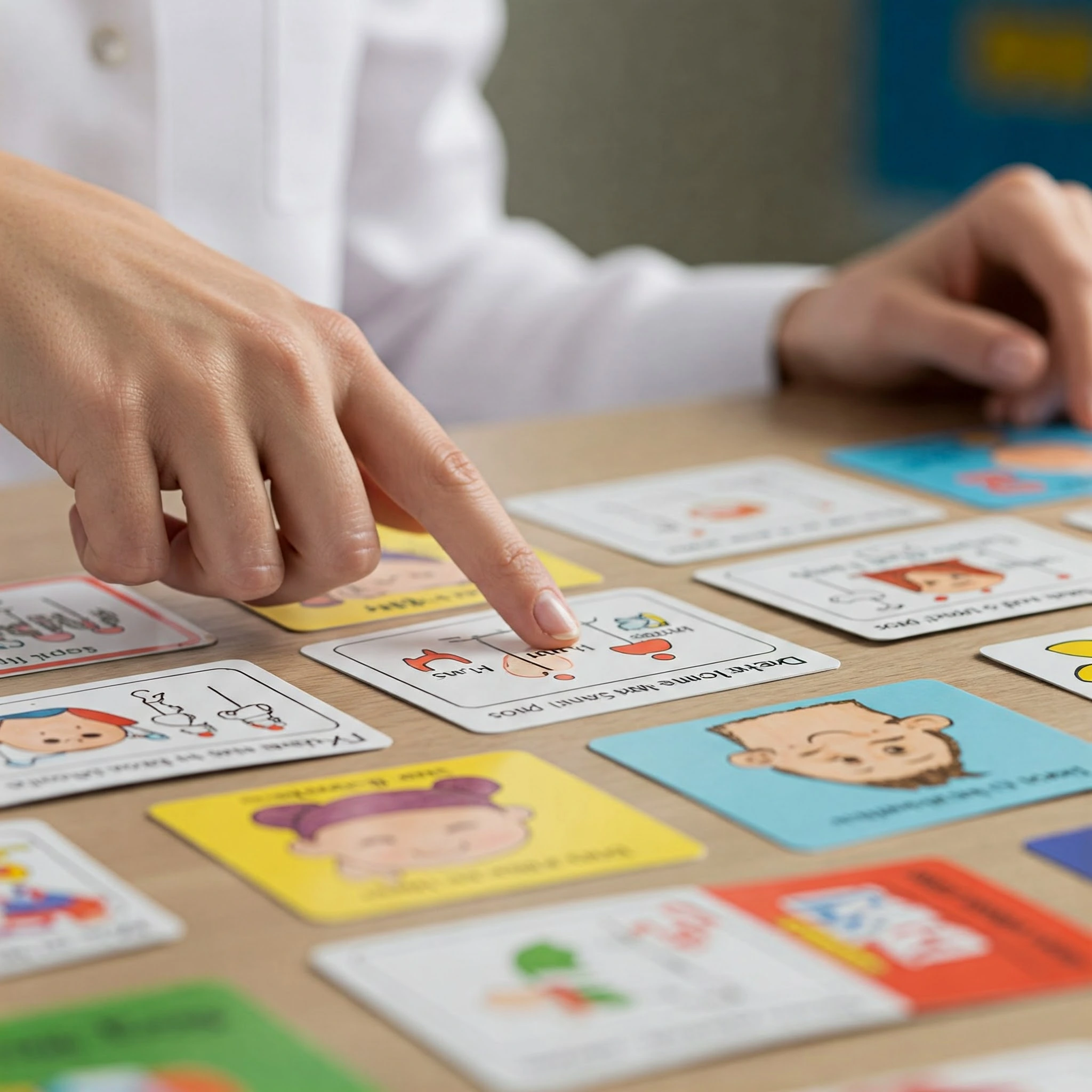Table of Contents
Speech Therapy Equipment plays a vital role in the improvement of communication skills. We're talking about tools that go beyond basic exercises. They provide structured support for speech therapists, parents, and individuals. Why is this important? Because effective communication impacts every aspect of life. From simple interactions to complex presentations, clarity matters. It allows for better understanding and increased confidence. What kind of tools are we discussing? Think of visual aids, software programs, and physical manipulative. These items assist in the development of articulation, fluency, and language comprehension. They are not just toys; they are instruments for progress.
Essential Speech Therapy Equipment for Effective Communication
Let's dive into the core tools. You want impact? These deliver.
Articulation Cards:
These are your bread and butter. Each card presents a sound, word, or phrase. They help individuals practice specific sounds and improve pronunciation. Think of them as flashcards, but for speech. Simple, yet powerful.
Mirrors:
A classic, but crucial. Why? Visual feedback. Seeing mouth movements helps correct errors. Clients gain awareness of their articulation. It is a direct approach.
Flashcards:
Versatile and adaptable. They cover a wide range of topics. Use them for vocabulary, grammar, and sentence structure. They are not just for kids. Adults benefit too.
Picture Boards:
Visual aids are key. Picture boards illustrate concepts and stories. They aid comprehension and expression. Especially useful for those with language delays. They make abstract ideas concrete.
These tools are fundamental. They create a foundation for effective communication. Do you need fancy gadgets? Not always. Basic tools, used well, make a difference.
How Assistive Speech Devices Enhance Therapy
Let's discuss how technology bridges gaps. Assistive devices offer new avenues for communication. They are not mere gadgets; they are pathways to connection.
Augmentative and Alternative Communication (AAC) Devices:
These systems go beyond simple communication. They provide tools for individuals who struggle with speech. AAC includes everything from picture boards to sophisticated software. Consider them a bridge, linking thoughts to words. They offer a voice where there may be none.
Speech-Generating Tools:
Imagine a device that speaks for you. That's what these tools do. They convert text or symbols into spoken words. They empower individuals with limited verbal abilities. This is not just about words; it's about autonomy. These tools provide a voice and a sense of independence.
Voice Amplifiers:
Sometimes, the issue is volume. Amplifiers boost vocal output. They are crucial for those with weak voices. Think of them as megaphones for the subtle voice. They ensure clear communication, even in noisy settings. These tools increase confidence and participation.
These devices change lives. They open doors. They provide access to communication. Do you want to see real change? These are the tools to consider. They offer a pathway to expression.

Best Interactive Tools to Improve Speech & Language
Let's talk about engaging therapy. You want results? Interactive tools deliver. They make learning fun. They keep clients motivated.
| Tool Category | Description | Benefits | Examples |
| Apps for Articulation and Phonology | Turn speech practice into a game with visuals and audio feedback. | Engaging, interactive, provides instant feedback, makes learning enjoyable. | Articulation Station, Speech Blubs |
| Language Development Software | Covers grammar, vocabulary, and sentence structure with structured lessons and progress tracking. | Supports consistent improvement, data-driven insights, personalized learning. | Lingraphica, Speech Therapy Apps |
| Interactive Digital Platforms | Uses virtual reality and interactive whiteboards to create immersive learning experiences. | Makes therapy dynamic and engaging, enhances retention, suits various learning styles. | Google Expeditions, SMART Boards |
| Teletherapy Platforms | Online therapy tools with video conferencing and interactive activities for remote sessions. | Increases accessibility, removes location barriers, offers flexibility for therapists and clients. | TheraPlatform, PresenceLearning |
These interactive tools are the future of speech therapy. They make learning enjoyable. They provide measurable results. Do you want to see progress? These tools are your allies. They transform therapy sessions.
Must-Have Sensory Tools for Speech & Language Development
Let’s dive into the core tools. What makes them essential? Consider therapy balls. They are not mere toys. They engage motor skills. They also build oral strength. Chewy tubes? They satisfy oral sensory needs. They also aid jaw development. Tongue depressors? They are not just for doctors. They help with tongue placement. Tactile feedback devices? These provide sensory input. They sharpen awareness.
Therapy Balls:
- Improve oral motor skills.
- Develop articulation.
- Increase jaw strength.
- Add sensory input.
Chewy Tubes:
- Address oral sensory cravings.
- Strengthen jaw muscles.
- Improve biting and chewing.
- Help with sensory processing.
Tongue Depressors:
- Assist in tongue placement exercises.
- Enhance articulation.
- Provide tactile feedback.
- Help with oral motor control.
Tactile Feedback Devices:
- Offer varied sensory input.
- Improve sensory awareness.
- Aid in sound production.
- Help with sensory integration.
How do these tools change the game? They provide hands-on experience. They make therapy interactive. They also target specific needs. A child struggling with articulation? A chewy tube can help. An adult with sensory processing issues? Tactile devices provide comfort. It is not just about talking. It is about feeling and understanding.
How to Select the Best Speech Therapy Supplies
Picking the right speech therapy supplies? It's like choosing the correct tool for a job. Age, disorder, and goals all matter. Do not grab the first shiny object. Instead, consider these criteria.
Age-Appropriateness:
- A toddler? Bright colors and simple textures work.
- A teenager? More mature, functional tools are needed.
- An adult? Tools that integrate into daily life are key.
Speech Disorder Type:
- Articulation issues? Tongue depressors and chewy tubes help.
- Sensory processing disorder? Tactile feedback devices are vital.
- Language delays? Picture cards and interactive games are effective.
Therapy Goals:
- Improving clarity? Focus on oral motor tools.
- Boosting comprehension? Use visual aids and puzzles.
- Enhancing social skills? Role-play materials are useful.
Why does this matter? The proper gear makes therapy more effective. It also keeps clients engaged. A child with autism? You need different tools than one with a stutter. A senior recovering from a stroke? They need other support materials entirely.
Do not overlook comfort. Is the tool easy to handle? Is it safe? Does it fit the individual’s needs? Select supplies that empower, not frustrate.
Where to Find High-Quality Speech Therapy Equipment
Finding the right speech therapy equipment shouldn't be a treasure hunt. You need sources you can trust. Where to look? I've got you covered.
Online Sources:
- Specialized therapy supply websites: These offer a wide range of tools. Seek out websites that provide comprehensive product descriptions along with customer feedback.
- Medical retailers online: Sites that provide medical supplies often carry speech therapy equipment. Compare prices and read specifications.
- Educational resource websites: These sites have materials for learning and development. Some offer tools for speech therapy.
Offline Sources:
- Therapy supply stores: Brick-and-mortar stores let you see and touch the equipment. This is a plus.
- Medical retailers: Local medical supply stores often have catalogs or in-stock options.
- Educational supply stores: Some stores cater to educators and carry materials useful for speech therapy.
Why does source matter? Quality impacts effectiveness. Safe and durable tools are essential. You do not want flimsy materials. You want gear that lasts.
Do not overlook reviews. What do other users say? Are the products reliable? Is customer service solid? These details matter.

Empower Speech Therapy with the Right Tools
Let's cut to the chase. Speech therapy equipment is not a luxury. It's a necessity. The correct tools make a difference. They turn hurdles into stepping stones. Consider the tools we discussed: therapy balls, chewy tubes, and tactile devices. Each serves a purpose. Each unlocks potential.
Why does this matter? Because communication is key. It connects us. It empowers us. And the correct tools amplify this. Age, disorder, and goals all play a part. You need the right fit. Do not settle for less.
Think of it this way: a musician needs the right instrument. A painter needs the right brush. Similarly, a speech therapist needs the right tools. They are essential to the work. Choose wisely. Pick quality. Select tools that empower. Do this and you’ll see the change. You will witness the advancement. You will observe the increase in confidence.

